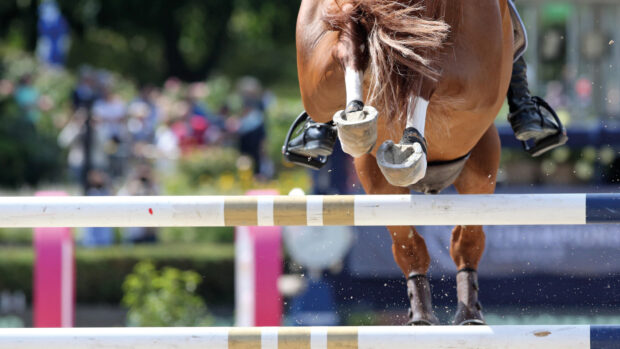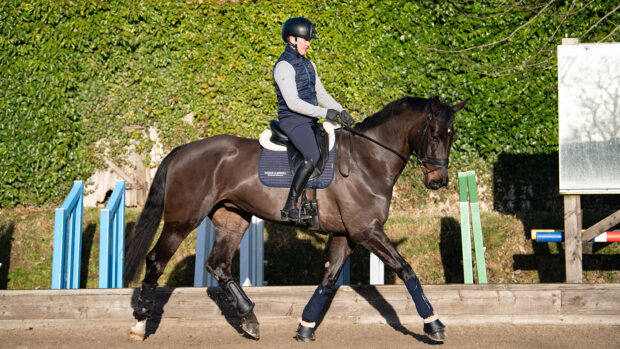Q: “Assuming she passes the vetting on Friday, I will soon be the proud (and incredibly broke!) owner of a beautiful just turned five-year-old 15.3hh Oldenburg mare. She was broken last summer and then turned away over winter as the breeder had too many horses and has since been slowly brought back into work this spring. This is the first time I’ve owned anything this young and green and I’m equal parts excited and terrified at having the opportunity to bring her on from the start and planning for her long term future.
“I’ve made the decision to keep her on schooling livery at our yard for at least the next six months to ensure she’s brought on correctly and I have the necessary help and support in place for when we hit the inevitable ups and downs that come with bringing on a youngster, but it would be great to hear from others how much work their five-year-olds are currently in as I don’t want to get it wrong.
“At present the schooling package includes three days of schooling, one hack and one lunge session and on top of this I will be having a short weekly lesson on her, but already I’m worrying that’s quite a lot of work for something that’s only been back in work a few months. Am I being too precious?
“I’m in absolutely no rush with her. My long term goal is to get her up to elementary/medium dressage and make sure she’s just a nice, confident, well-rounded little mare. I have no plans to compete her this year, aside from maybe the odd intro test to get her out and about and seeing the sights and sounds of somewhere unfamiliar but I’m sort of at a loss as to how much work she should be in as I don’t want to push her too hard too soon.”
A: My horses are trained to be eventers, rather than dressage horses, and the approach is quite different, but there are some rules that apply to any horse.
As a general rule of thumb my younger horses work on average five days a week. Their two days off will be interspersed rather than after each other, but if I feel they are too sharp after a second day off, I will drop it back to one.
With any horse you are training the mind as well as the body so I will break up their training with periods of two or three weeks off which is enough time for them to freshen up, and perhaps recover from muscle fatigue, but not enough time for them to loose too much muscle tone. Giving the brain a break, as well as the body, will ensure your horse comes back fresher and stronger each time.
Continued below…
Related articles:
If you have a really trainable horse that is eager to please, the temptation is to become greedy and keep going but you must be strict with yourself as eventually your horse will become stale if he isn’t allowed time off.
However, nothing is set in stone. Perhaps after a really successful week’s training, you might feel it is a good time to give your horse a break, or you may have built up to a competition and then feel a break afterwards would be good.
It is beneficial to train for two to three days in the school as they will progress much quicker but it is important to get them out hacking too, if that’s a feasible option.
Using hills will strengthen up your horse without putting too much pressure on the brain while getting her to think forward and seeing a bit of the world.
Before each schooling session have a plan of what you want to work on, give yourself ten minutes to warm up, 15 to 20 minutes to work and five minutes to cool down.
Aim for little steps of improvement each time. If your horse is really pleasing you and has achieved what you wanted to achieve within 20 minutes, give them a pat and take them in. There is no reason to keep going and going.
That’s why it is important to plan what you are trying to achieve, rather than to keep going. Give them a reward and let them finish on a good note.
Always stick to the scales of training and if you are ever unsure revert back to the check list. Once you have your transition nailed, everything else will come together. If they move away from the leg sideways and forwards and stay connected in transition, at five years old I am happy with that.




